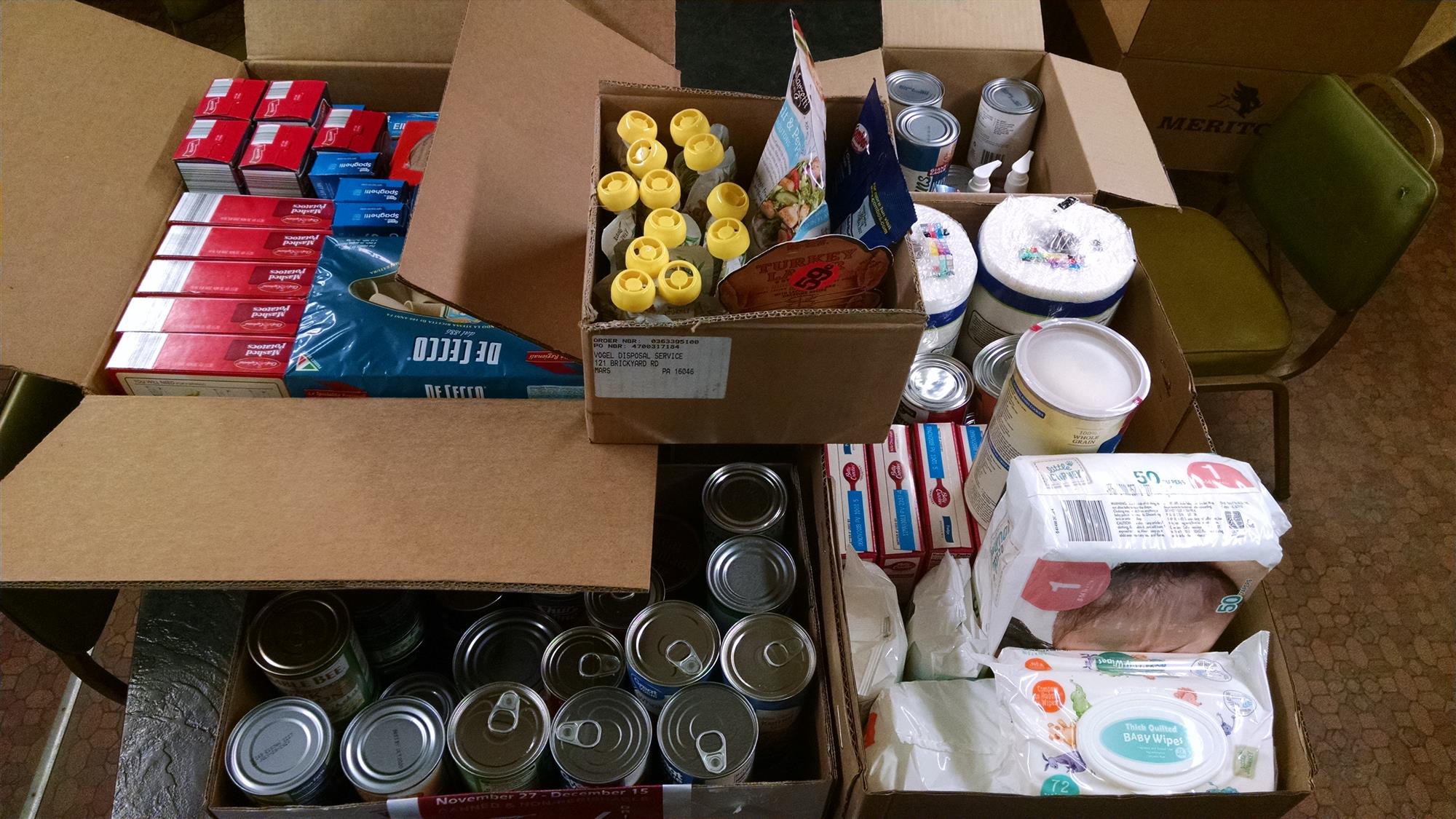As the holiday season approaches, many food banks find themselves grappling with a critical issue: running out of food when it is needed most. This situation can be attributed to a confluence of factors that impact food banks’ ability to meet the heightened demand during Christmas. To meet the challenges faced by food banks during this Holiday Season, communities and offsite construction businesses can come together to address these issues.

Peg and I have been volunteering at a local food bank for more than a decade. One example of why our industry needs to step up to help can be found in the food bank we work. Last Thanksgiving we served 230 families monthly (almost 1,000 men, women, and children) and had stocked shelves and a turkey or ham for every family. This Thanksgiving, the number of families is up to 475 families and almost 2,000 individuals. We only had 60 turkeys and our donations from the state and other sources have been rationed to the point that without the help of a couple of people making large food donations, we would have had to close the week of Thanksgiving.
The holiday season witnesses a surge in demand for food assistance. Families and individuals often face financial strain due to the additional expenses associated with gifts, travel, and other holiday-related costs. Consequently, more people turn to food banks for support during this period.
While economic hardships affect individuals and families year-round, these challenges tend to intensify during the holiday season. Job losses, economic downturns, and financial difficulties can lead to a greater reliance on food banks as people seek help to make ends meet.
Food banks heavily depend on donations from various sources, including individuals, businesses, and grocery stores. However, disruptions in the supply chain, such as those caused by the COVID-19 pandemic, can affect the availability of donated food items, making it difficult for food banks to maintain their inventory.

While the demand for food assistance rises during the holidays, the influx of donations may not match this increase. Some individuals may be focused on charitable giving during this time, but others may be facing financial constraints themselves, reducing the amount of food available for donation.
Efficiently collecting, sorting, storing, and distributing food to those in need is an ongoing challenge for food banks. During the holiday season, logistical issues can arise as food banks manage the surge in donations and work to ensure that food reaches those who require assistance promptly.
Food banks often rely on donations of surplus or excess food from various sources. However, not all donated food items are suitable for distribution due to issues like expiration dates, packaging damage, or quality concerns, which can lead to food waste.
Food banks may have limited resources, including funding, staff, and storage capacity. Meeting the increased demand during the holidays can strain their ability to maintain adequate food supplies.
Some food banks heavily rely on seasonal food drives and fundraising efforts to stock their shelves for the holidays. If these initiatives do not meet their goals, it can lead to shortages.
How Your Offsite Construction Factory Can Help
To address these challenges and ensure that food banks can continue to serve their communities during the Christmas season, collective efforts are essential. Our industry can come together to support these organizations through donations, volunteering, and awareness campaigns. Factories and manufacturing facilities can play a crucial role in supporting food banks through various means.
The best way for our industry to step up to this challenge is to encourage key volunteers with your company to form a team and begin addressing this serious problem faced by almost 40 million people in the US. Even among a factory’s employees, there are several, if not more, that visit food banks every month.
The reasons vary, but needing food to feed their families shouldn’t add to an employee’s problems.

Food Donations: Regularly donating surplus or unmarketable food products to local food banks or charitable organizations can help ensure a consistent supply of food. Organizing on-site food drives within the workplace encourages employees to donate non-perishable food items. This can be accomplished as easily as designating an area within the factory where stable food products can be dropped off.
Financial Support: Companies can make financial contributions to local food banks or hunger relief organizations to assist with their operations. There are some businesses across the US where employees can have 10 cents an hour deducted from their pay to be collected and sent to a local food bank every month.
10 cents x 40 hours x 100 employees = $400 a month!
Implementing a program where the company matches employees’ donations to food banks doubles the impact of contributions.
Volunteer Programs: Encouraging employees to volunteer their time at food banks or participate in food drives fosters a sense of community involvement.
Transportation Assistance: Offering transportation services to help food banks pick up donations or deliver food to distribution centers can be especially beneficial for perishable items. Every factory has a truck and driver they could offer a food bank at least once a month.
Partnerships: Establishing partnerships with a local food bank, can lead to ongoing collaborations that strengthen the impact of efforts. Employees making donations like to know where their donations of food or money is helping. It may even encourage more volunteerism by many in the factory. Educating employees about the importance of supporting food banks and addressing food insecurity in the community can create a culture of giving and social responsibility within the company.
Holiday Food Drives: Organizing special food drives during holidays or times of increased need can provide essential support to food banks.

Food banks facing shortages during the Christmas season are grappling with a complex set of challenges. However, by working together as communities and businesses, we can help ensure that these vital organizations have the resources and support they need to continue their mission of providing nutritious food to those in need, not only during the holidays but throughout the year.
But remember, food is just as important every day of the year to those in need, not just on Holidays.
Contact me for help designing a program for your factory – Modcoach@gmail.com
.



